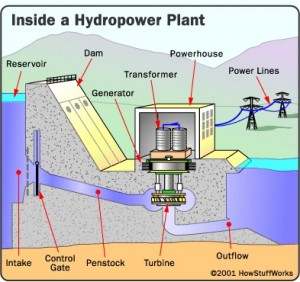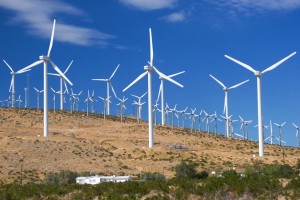In the opening Page of this blog (‘About this blog and me’) I reserved the right to “…occasionally discuss ‘random thoughts’ on other issues that catch my attention….”. Well, today’s Post is this blog’s second such occasion – the first was sharing a delicious and easy-to-make cheesecake recipe.
As I’m sure is true of many people in this country, and perhaps in other countries, the U.S. Government’s difficult roll-out of the Affordable Care Act ( ACA, aka as ‘Obamacare’) has attracted great attention. How could such an important Government activity be so poorly handled? The following Post is my take on that frustrating question.
(Note: my next blog, which I should publish in the next few days, will be a return to the blog’s focus on energy and water and related issues. It will discuss ocean energy.)
Why is the ACA having such a difficult rollout?
I am not an IT (information technology) expert but I did serve more than 25 years in the U.S. federal government and have spoken with an IT expert about the Affordable Care Act’s (Obamacare’s) startup problems. Here are my thoughts based on this experience and discussion:
I would first refer you to an article by Walter Pincus that appeared recently in the Washington Post on this topic (the story can be found at wapo.st/19wHvHL). It is a piece worth reading for the perspective it provides on an issue that has grabbed public attention. He offers several examples of other government roll-out problems and concludes that “the new health care law’s computer issues are not unique.”
Unique or not, the ACA roll-out has given the U.S. government a bad name and there may be a fundamental problem behind it. While contractors were hired to develop the computer code needed to allow people to apply for health insurance online, and presumably these contractors were competent in this area, final decisions on roll-out, etc., were in the hands of federal officials. In most cases I’m willing to bet that these officials were not IT specialists and under the gun to get something out by the legislated deadlines.
Another problem is that the major contracting companies in the area have proven that from time-to-time they do not hesitate to accept less-than-appropriate direction from their underqualified government managers. As is with most time and material contracts, they stand to benefit more from going along.
There are clearly places in the federal government where this expertise exists (e.g., selected parts of the National Security Agency, the Office of Management and Budget, and the U.S. Department of Energy) but why should we expect the Department of Health and Human Services, which was responsible for the roll-out, to have this expertise? It is not a routine part of their mission function and their ability to attract IT-qualified staff is limited by USG pay scales. Even if one is hired as a GS-15 or -16, considered to be at the top of the pay scale, the maximum salary is about $170,000, well below what such expertise can bring in the private sector.
This is not a problem unique to HHS, as many of us who opted for public service did it for reasons other than salary can attest, but at a time when IT expertise is at a premium it does mean that government agencies are at a disadvantage in competing for the best IT talent. Given Congressional attitudes this situation is not likely to change.
Perhaps a more serious issue built into the system is that decisions made by inexperienced, IT-unqualified and hassled government officials can have major impacts, as the ACA case seems to illustrate. Why was system testing delayed until just two weeks before roll-out? Why wasn’t there more timely coordination among federal and state agencies in planning the system and its roll-out? Where was the necessary oversight by senior HHS officials? Were the best IT contractors hired for the job or was this a lowest bid situation? Many other questions can be asked as well and I’m sure will be.
As someone who believes strongly in public service I get upset when public servants are demeaned. My experience in government taught me that the vast majority of government workers are dedicated to their tasks and committed to helping the public and providing value for money. Obviously not true in every case, but this is the case in the private sector as well. What is disturbing about the ACA situation is that an important and critical national policy (access to at least a minimum level of health care for all U.S. citizens) is being damaged by carelessness on the part of the U.S. government, a pay system that keeps needed expertise away from government service, and opportunistic political attacks that put political party loyalty above national needs. ACA undoubtedly needs to be improved in the future, as was true of social security in its day, but it is needed by the American public. How can the richest country in the history of the world deny even this level of protection to its citizens?












